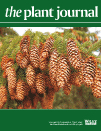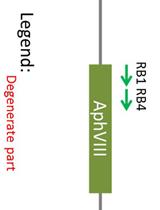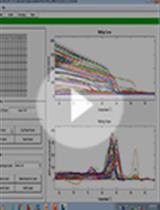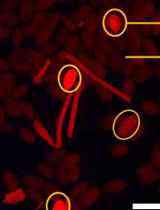- EN - English
- CN - 中文
Strategies for Performing Dynamic Gene Perturbation Experiments in Flowers
在花朵中进行动态基因扰动的实验策略
发布: 2016年04月05日第6卷第7期 DOI: 10.21769/BioProtoc.1774 浏览次数: 9554
评审: Samik BhattacharyaXinyan ZhangAnonymous reviewer(s)
Abstract
Dissecting the gene regulatory networks (GRNs) underlying developmental processes is a central goal in biology. The characterization of the GRNs underlying flower development has received considerable attention, however, novel approaches are required to reveal temporal and spatial aspects of these GRNs. Here, we provide an overview of the options available to perform dynamic gene perturbations to identify downstream response genes at specific stages of development in the flowers of Arabidopsis thaliana.
Keywords: Arabidopsis thaliana (拟南芥)[Introduction] Gene activity perturbation followed by expression analysis of downstream targets represents a powerful method to understand gene function and dissect regulatory hierarchies. The transcriptomes of “static” mutant lines (e.g., caused by point mutations, transfer-DNA insertions, or constitutive expression) are often compared with those of wild type counterparts, which can confound the biological interpretation of the expression data. For example, a null mutant (noted ag-1) of the transcription factor AGAMOUS (AG) lacks stamens and carpels, which are replaced by sepals and petals (Figure 1A and 1B) (Bowman et al., 1989). A comparison of the transcriptomes of ag-1 flowers with wild-type flowers may lead to the conclusion that AG regulates the expression of genes controlling the specification of mature tissues in the anther and gynoecium. This interpretation is inappropriate, as AG is required for the specification of these organ-types (Bowman et al., 1989; Yanofsky et al., 1990). Therefore, the cause of the expression differences observed may be a result of tissue biases (Wellmer et al., 2004). Dynamic perturbations circumvent these and other issues: i) the tissues harvested will be morphologically identical, as tissue from “mock-treated” and inducer-treated plants would normally be harvested within a 24 h time-frame, ii) the response of downstream targets can be measured in the range of minutes and hours, which can be useful to infer direct and indirect interactions, iii) the development-dependent functions of the regulators of interest can be dissected (O'Maoileidigh et al., 2015). Flowers of the model plant Arabidopsis thaliana are minute, particularly at early stages of development. Furthermore, they are initiated in a sequential manner such that no two flowers are at the exact same stage of development on any given inflorescence (Smyth et al., 1990). Until recently, these traits have inhibited investigations into the molecular mechanisms underlying the earliest stages of flower development. There are many strategies available to isolate tissue from young flower buds including laser capture microdissection and fluorescent activated cell sorting (Birnbaum et al., 2003; Mantegazza et al., 2014; Wuest and Grossniklaus, 2014). We prefer to use a floral induction system (FIS) to isolate flowers at specific stages of development, as it is a user friendly, low-cost approach (O'Maoileidigh et al., 2015; Wellmer et al., 2006; O'Maoileidigh and Wellmer, 2014). This system is based on the reintroduction of APETALA1 (AP1) activity into the apetala1-1 cauliflower-1 (ap1-1 cal-1) background via either a rat glucocorticoid (Wellmer et al., 2006; O'Maoileidigh and Wellmer, 2014; O’Maoileidigh et al., 2013) or a mouse androgen (O'Maoileidigh et al., 2015) receptor ligand binding domain (noted GR and AR, respectively) fusion with AP1. Once the FIS ap1-1 cal-1 inflorescences are treated with dexamethasone or dihydrogentestosterone (DHT, 5α-androstan-17β-ol-3-one), respectively, AP1 translocates to the nucleus to regulate transcription, which leads to the formation of many flowers on a single inflorescence that are at similar stages of development (Wellmer et al., 2006; O'Maoileidigh and Wellmer, 2014). We have shown that stage-specific flowers can be reliably harvested from early to late stages of development (Wellmer et al., 2006; Ryan et al., 2015). We have also demonstrated that these FISs can be combined with two-component inducible systems that facilitate dynamic perturbations (O'Maoileidigh et al., 2015; O’Maoileidigh et al., 2013; Wuest et al., 2012). We have generated FISs that are responsive to dexamethasone and DHT, which we have combined with the ethanol-responsive AlcApro/AlcR and the OPpro/GR-LhG4 dexamethasone-responsive two-component systems, respectively, to express artificial microRNAs (amiRNAs) that perturb gene activity. We have successfully used these lines to assess the stage-specific functions of genes of interest (O'Maoileidigh et al., 2015; O’Maoileidigh et al., 2013; Wuest et al., 2012). Notably, we also observed that these two-component inducible systems can influence the expression of the A. thaliana genome independently of the intended amiRNA-mediated perturbation (O'Maoileidigh et al., 2015). Therefore, we developed and described several control measures that must be taken in order to account for these experimental artifacts (O'Maoileidigh et al., 2015). In the following protocol, we provide technical advice for implementing dynamic perturbation strategies during flower development and the establishment of the experimental design. As a guide, we briefly discuss the perturbation strategies implemented to understand the functions of the homeotic gene AG, including our published and unpublished results, as well as data from the literature.
Materials and Reagents
- 20 cm x 32 cm x 50 cm trays with plastic lids [Romberg & Sohn, catalog number: 51221K (trays) and 74051K (lids)]
- 50 ml centrifuge tubes (Sigma-Aldrich, catalog number: CLS430829-500E )
- Disposable pasteur pipettes (Thermo Fisher Scientific, catalog number: 12837625 )
- Mouse AR coding sequence [obtained from the vector pBJ36-mAR (O'Maoileidigh et al., 2015)]
Note: Only the ligand-binding domain was fused to AP1. - Rat GR coding sequence [obtained from the vector pBJ36-GR (O’Maoileidigh et al., 2013)]
Note: Only the ligand-binding domain was fused to AP1. - SRDX domain fusions [produced using the vector p35SSRDXG (Mitsuda et al., 2011)]
Note: The SRDX amino acid sequence is LDLELRLGFA (Ikeda and Ohme-Takagi, 2009). - The WUSB coding sequence [obtained from the vector p35SWUSB (Ikeda et al., 2009)]
Note: The WUSB amino acid sequence is HRRTLPLFPMHGED (Ikeda et al., 2009). - VP16 domain fusions [produced using the vector p35SVP16 (Mitsuda et al., 2011)]
Note: Genbank accession KM486811 for VP16 activation domain sequence in a cloning vector. - AlcA sequence [obtained from AlcApro-pBJ36 (Leibfried et al., 2005)]
- AlcR coding sequence [obtained from 35Spro:AlcR-pML-BART (Leibfried et al., 2005)]
- GR-LhG4 coding sequence [obtained from 35Spro:GR-LhG4-pML-BART (Wuest et al., 2012)]
- OPpro sequence [obtained from 6xOPpro-pBJ36 (Wuest et al., 2012)]
- Floral induction system (FIS) [Various versions of the FISs are available from Dr. Frank Wellmer (O'Maoileidigh et al., 2015; Wellmer et al., 2006; O'Maoileidigh and Wellmer, 2014)]
- CONTROL-amiRNA sequence [obtained from pBJ36-AlcApro:CTRL-amiRNA (O'Maoileidigh et al., 2015)]
- GR antibody [obtained from Santa Cruz ( sc-1002 ) (Kaufmann et al., 2010)]
- Dexamethasone (Sigma-Aldrich, catalog number: D4902 )
- α-Androstan-17β-ol-3-one (DHT) (Sigma-Aldrich, catalog number: A8380 )
- General reagents for molecular cloning and expression analysis
- Liquid nitrogen
- 10 mM dexamethasone stock solution (see Recipes)
- 100 mM DHT stock solutionpowder (see Recipes)
- GR activation solution (see Recipes)
- AR activation solution (see Recipes)
Equipment
- Sharp Forceps (Sigma-Aldrich, catalog number: T5790 )
- Dissection microscope
- General equipment for molecular cloning and expression analysis
Procedure
文章信息
版权信息
© 2016 The Authors; exclusive licensee Bio-protocol LLC.
如何引用
Ó’Maoiléidigh, D. S., Graciet, E. and Wellmer, F. (2016). Strategies for Performing Dynamic Gene Perturbation Experiments in Flowers. Bio-protocol 6(7): e1774. DOI: 10.21769/BioProtoc.1774.
分类
植物科学 > 植物发育生物学 > 综合
植物科学 > 植物分子生物学 > DNA > 诱/突变
分子生物学 > DNA > 诱/突变
您对这篇实验方法有问题吗?
在此处发布您的问题,我们将邀请本文作者来回答。同时,我们会将您的问题发布到Bio-protocol Exchange,以便寻求社区成员的帮助。
提问指南
+ 问题描述
写下详细的问题描述,包括所有有助于他人回答您问题的信息(例如实验过程、条件和相关图像等)。
Share
Bluesky
X
Copy link













